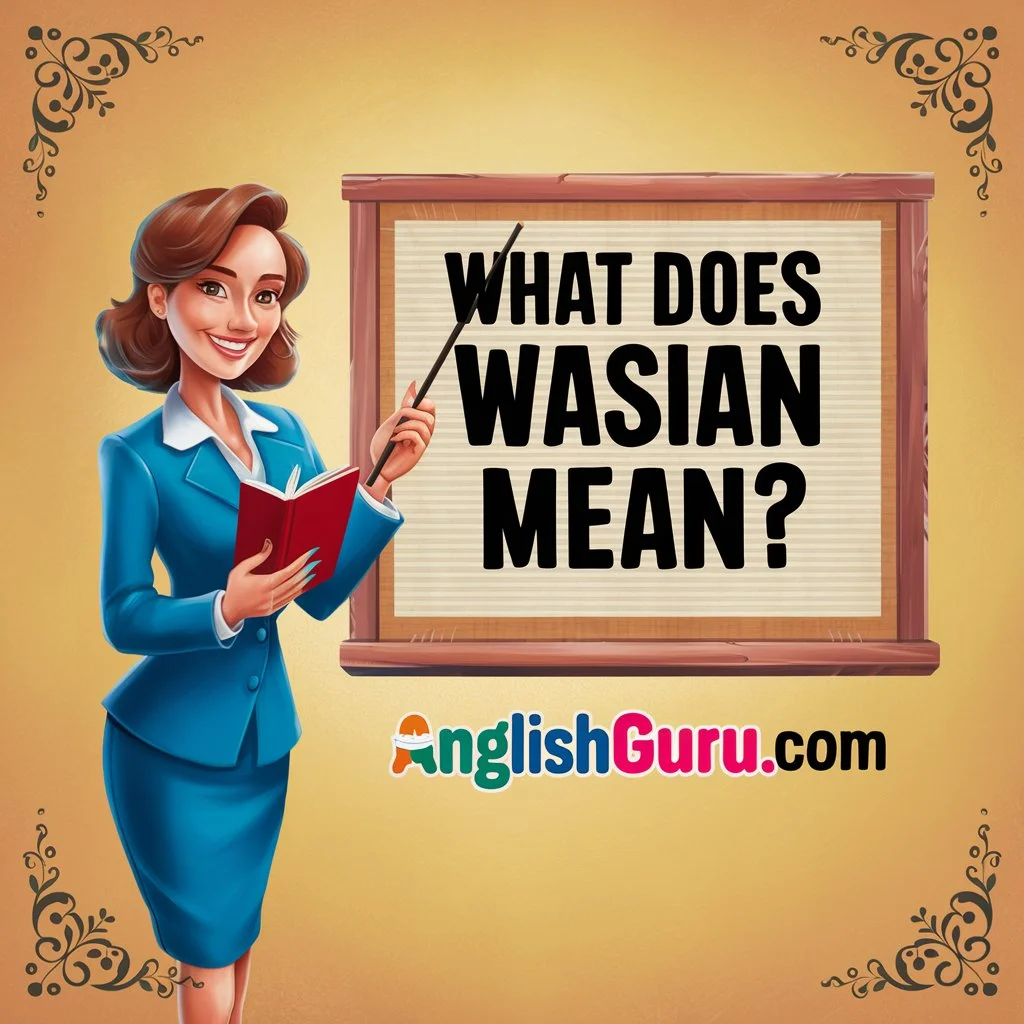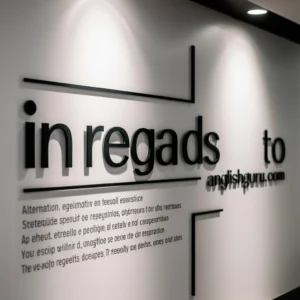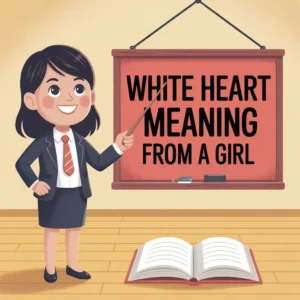The term “Wasian” has become increasingly recognized in today’s multicultural society and online spaces. It’s a modern expression born from internet slang but rooted in a genuine need to describe mixed Asian and White identity. What started as a playful online word has now evolved into a broader cultural conversation about heritage, identity, and belonging.
At its core, Wasian is a portmanteau—a blend of the words White and Asian. It’s used to describe individuals with both Asian and White ancestry. The tone can range from casual and humorous to proud and affirming, depending on how it’s used.
This article explores the real Wasian meaning, the word’s origins, and 17+ respectful alternatives that can fit professional, casual, or cultural discussions. You’ll also find 11 texting examples to help you use or understand “Wasian” naturally in modern communication.
By the end, you’ll not only grasp the meaning of “Wasian” but also know how to talk about mixed heritage with empathy, inclusivity, and cultural respect.
What Does Wasian Mean? — Understanding the Real Wasian Meaning
At its simplest, “Wasian” refers to someone who is part White (Caucasian) and part Asian. It combines both heritages into a single, catchy word that’s often used by younger generations in social media spaces like TikTok, Twitter, and Reddit.
The Wasian meaning depends on tone and intent. It can be:
- Descriptive — “I’m Wasian; my mom is Korean, and my dad is Canadian.”
- Community-based — “Wasians unite!” used in online forums and memes.
- Playful or humorous — used lightly in conversation to highlight cultural mix or quirks.
While it’s informal, the term often carries a sense of belonging and pride among people who share similar experiences.
The Origin and Background of the Word Wasian
The origin of Wasian dates back to the early 2000s, when the internet began to play a major role in identity expression. It emerged as a simple abbreviation combining “White” and “Asian” — similar to how “Blasian” means Black + Asian.
Initially, “Wasian” circulated in online forums and early social media, where mixed-race individuals discussed shared experiences. Over time, it became popular across TikTok, YouTube, and Instagram, representing both cultural humor and genuine connection.
Today, the Wasian community online often uses the term to celebrate diversity, share personal stories, and embrace their unique cross-cultural identity.
Why the Wasian Meaning Matters in Modern Language
Understanding the meaning of Wasian goes beyond just knowing what it stands for. It’s about recognizing the growing diversity in global societies and the importance of inclusive language.
For people of mixed Asian and White heritage, the word represents:
- Pride in both sides of their background.
- Connection with others who share similar cultural experiences.
- Recognition in conversations about diversity and representation.
However, since it’s an informal term, using it in the right tone and context matters. In professional or academic situations, more neutral or formal alternatives are recommended.
Cultural Sensitivity Around the Word “Wasian”
While many people embrace the Wasian identity proudly, others may prefer to describe their heritage without slang. The comfort level varies by individual.
Here are some general guidelines:
- Avoid using Wasian if you’re unsure whether someone identifies that way.
- In professional writing or interviews, opt for terms like mixed-race, biracial, or of Asian and White descent.
- Use Wasian only when the context is informal or when someone self-identifies that way.
The key is respect and intent. Identity language should celebrate, not categorize or stereotype.
Why Look for Alternatives to the Word “Wasian”?
Though widely used online, there are good reasons to seek alternatives depending on your situation or audience:
- Professionalism – “Wasian” can sound too informal in workplaces, resumes, or research papers.
- Clarity – Neutral words like “mixed race” are easier to understand across cultures.
- Sensitivity – Not everyone identifies with internet-based slang.
- Inclusivity – Broader terms include all backgrounds without focusing too narrowly.
With that in mind, let’s look at 17+ alternative ways to say “Wasian” — divided by tone: formal, polite, and casual.
🟩 15+ Polite, Professional & Casual Alternatives to “Wasian” (With Examples)
1. Mixed Race
Tone: Neutral | Best for: Academic, professional, or polite use
This is one of the most accepted and respectful terms globally.
Example:
“She identifies as mixed race, with both Asian and European roots.”
2. Biracial
Tone: Neutral | Best for: Personal introductions, essays, or reports
A widely recognized term describing someone of two racial backgrounds.
Example:
“As a biracial individual, he often bridges Eastern and Western traditions.”
3. Multiracial
Tone: Inclusive | Best for: Diversity discussions or organizational settings
Refers to people with more than one racial heritage, offering a broader scope.
Example:
“Our school celebrates multiracial identity during cultural week.”
4. Of Asian and White Descent
Tone: Polite | Best for: Interviews, bios, or respectful dialogue
A precise and culturally aware expression.
Example:
“She is of Asian and White descent, fluent in both Mandarin and English.”
5. Part Asian, Part White
Tone: Friendly | Best for: Informal conversations
Simple and conversational, yet still clear and polite.
Example:
“My best friend is part Asian, part White and celebrates both cultures at home.”
6. Half Asian
Tone: Casual | Best for: Everyday speech or self-description
Commonly used, but should only be used if the individual uses it for themselves.
Example:
“He’s half Asian and proud of his multicultural roots.”
7. Of Mixed Heritage
Tone: Polite | Best for: Descriptive, non-academic contexts
This emphasizes cultural richness over racial classification.
Example:
“She comes from a family of mixed heritage, celebrating many traditions.”
8. Culturally Mixed
Tone: Warm | Best for: Friendly or descriptive writing
Focuses on culture rather than race, making it more inclusive.
Example:
“He grew up in a culturally mixed household with both Asian and European customs.”
9. Multicultural Background
Tone: Professional | Best for: Resumes, corporate bios, or essays
Shows appreciation for diversity in background and experience.
Example:
“Her multicultural background gives her a unique global perspective.”
10. Asian-European Heritage
Tone: Formal | Best for: Biographical or cultural contexts
Used when specifically referring to Asian and European ancestry.
Example:
“He comes from an Asian-European heritage, blending two distinct traditions.”
11. Eurasian
Tone: Historical & neutral | Best for: Literature or global contexts
A well-established term referring to those of European and Asian ancestry.
Example:
“The author identifies as Eurasian, often exploring cross-cultural identity in her novels.”
12. Dual Heritage
Tone: Polite & formal | Best for: Educational, cultural, or diversity settings
Highlights balance and equality between both sides.
Example:
“Her dual heritage inspires her art, which merges Asian motifs with Western techniques.”
13. Of Blended Descent
Tone: Poetic | Best for: Creative or expressive writing
Evokes harmony and connection between two heritages.
Example:
“He describes his life as one of blended descent, bridging two worlds.”
14. Half-White, Half-Asian
Tone: Casual | Best for: Self-identification in informal spaces
Direct and clear, but best used personally rather than about others.
Example:
“I’m half-White, half-Asian, and proud of both my family’s roots.”
15. Asian-Western Mix
Tone: Friendly | Best for: Conversations or online posts
A modern, informal alternative suited for everyday use.
Example:
“Her Asian-Western mix influences her style, food, and values.”
16. Mixed Cultural Identity
Tone: Academic or reflective | Best for: Essays or reports
Highlights identity as a blend of cultures rather than race.
Example:
“He studies how mixed cultural identity shapes belonging in global societies.”
17. Global Background
Tone: Modern & positive | Best for: International or creative contexts
A broad and uplifting phrase avoiding direct racial focus.
Example:
“With a global background, she easily connects with diverse audiences.”
18. Culturally Diverse Roots (Bonus)
Tone: Inclusive & warm
Focuses on diversity and pride rather than labels.
Example:
“He takes pride in his culturally diverse roots and upbringing.”
🟨 How to Choose the Right Alternative to “Wasian”
Choosing the right expression depends on tone, purpose, and audience.
Here’s a simple tone-based guide:
| Context | Best Alternatives | Example Usage |
|---|---|---|
| Formal writing | Mixed race, Of Asian and White descent, Multiracial | “The report focuses on experiences of mixed-race individuals.” |
| Professional settings | Dual heritage, Multicultural background | “She brings a multicultural background to her role.” |
| Friendly conversation | Half Asian, Asian-Western mix | “I didn’t know you were half Asian — that’s awesome!” |
| Creative writing | Blended descent, Culturally diverse roots | “Her poetry celebrates her culturally diverse roots.” |
| Online/social media | Wasian, Part Asian, Part White | “#Wasian pride — embracing both sides of my culture!” |
🟦 11 Texting Examples Using “Wasian” & Its Alternatives
Here are practical ways to use “Wasian” and other respectful alternatives in text or online messages:
- Casual intro: “Hey! I’m half Asian, half White — nice to meet someone who gets both sides.”
- Professional bio: “As a biracial designer, I blend Eastern and Western influences in my work.”
- Supportive message: “Love how you’re celebrating mixed heritage in your content!”
- Compliment: “Your multicultural background shows in your amazing creativity.”
- Family chat: “My siblings and I are of Asian and White descent — double the traditions!”
- Online discussion: “Being part Asian, part White means enjoying both dumplings and pasta.”
- Social caption: “Wasian energy ✨ celebrating my mixed heritage with love.”
- Polite message: “In my essay, I used the term dual heritage — it feels more inclusive.”
- Friend text: “You’re Eurasian? That’s awesome! Love how you embrace both sides.”
- Identity reflection: “Sometimes being of blended descent makes me feel unique.”
- Cultural appreciation: “I admire how Eurasian artists represent diversity in media.”
🟧 Tone and Context: How to Use “Wasian” Correctly
Understanding tone is key when discussing identity.
Here’s how to adjust usage appropriately:
| Tone | Do | Avoid |
|---|---|---|
| Respectful | Use “Wasian” when someone identifies that way. | Labeling others without consent. |
| Professional | Use neutral phrases like “mixed race” or “dual heritage.” | Using slang like “Wasian” in formal documents. |
| Friendly | Light, positive usage. | Jokes or stereotypes. |
| Academic | Terms like “biracial” or “multiracial.” | Casual slang or abbreviations. |
🟥 Why Inclusive Language Around Heritage Matters
Inclusive language acknowledges identity without boxing people into stereotypes. Using it thoughtfully:
- Promotes understanding and respect.
- Prevents misrepresentation.
- Encourages self-expression.
- Reflects cultural empathy and professionalism.
When people feel seen and respected through language, it fosters harmony and belonging in multicultural communities.
Final Thoughts on the Real Wasian Meaning
The Wasian meaning captures more than a blend of two words — it reflects a blend of two worlds. It represents individuals who embody both Asian and White heritage with pride, creativity, and cultural awareness.
While it began as casual internet slang, “Wasian” has evolved into a meaningful identity marker for many. Yet, in formal or professional spaces, choosing respectful alternatives like mixed race, dual heritage, or multicultural background ensures sensitivity and clarity.
Ultimately, whether you use Wasian or one of its alternatives, the goal remains the same — to speak with respect, authenticity, and inclusivity.
Every heritage tells a story. And the word “Wasian,” in its modern, evolving form, is one of many ways to honor that story with pride.





